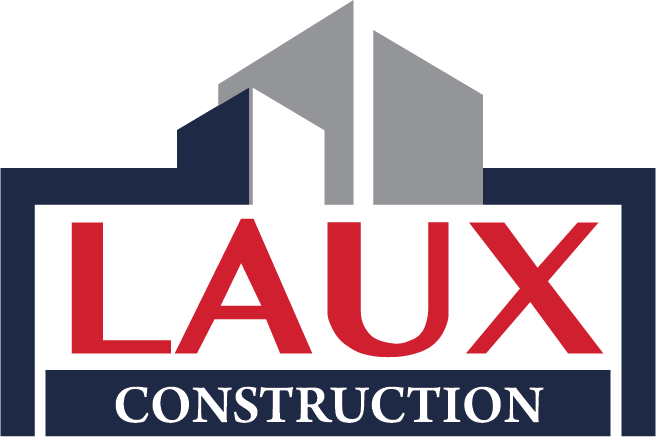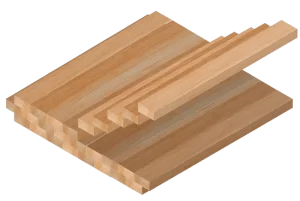Wood has been a building material for the last 10,000 years, with the first timber home being constructed in the Stone Age. Since wood is so popular to build with, why is it mainly used for residential projects only; and what’s the difference between wood, timber, and lumber? Wood is simply an umbrella term that covers both lumber and timber, and from here the differences begin. When you cut a tree, you are cutting wood. However, you are cutting wood into timber, which is why you yell ‘TIMBER!’ as the tree falls to the ground. Timber is wood that will be used for building materials or other purposes and has yet to be processed. When you see semis hauling trunks that still have bark on them, they are hauling timber to the next step of processing – milling. When the timber has arrived at a sawmill, the timber is then cut into planks creating lumber. Hence the name lumberyard when you are buying building materials.

Now that we understand the different stages of wood processing, why can’t we use wood for more than just residential projects? Commercial wooden buildings were much more common into the 19th century, until the Great Chicago Fire of 1867. The ‘Windy City’ was mostly wooden structures then, but when a fire broke out it couldn’t be stopped. The city burned for two days, killing an estimated 300 people and causing around $200 million in damages, until a miracle rain came and aided the firefighters in stopping the disaster. It was this major incident that enacted stricter building codes and fire regulations, and the start of building with metal. 200 years later, we’ve studied the consequences of creating these metals, such as the gas emissions and waste. To combat these issues, scientists and engineers circled back to the idea of wooden buildings, but with much more planning, and are having successful outcomes. The new industry of Mass Timber has been in the works and been creating buildings that are stronger than steel! So how is this being accomplished, and how is it better than the steel buildings that we have now?
There are many methods of Mass Timber, such as Cross-Laminated Timber (CLT) and Glue-Laminated Timber (GLULAM). CLT is mainly used for areas where forces are in different directions, so the wood is stacked perpendicular to each other, like Jenga blocks. This allows there to be more rigidity and stability. GLULAM is made the same way except the boards all point the same direction. This is best for same-way forces, such as columns and beams. So, if we are using strictly wood to build, how can it be better for the Earth and humans? (Photo Credit: Think Wood)
Many forests have regulations that help maintain this industry’s sustainability efforts, as well as the building itself helping the environment. For starters, many forests are ‘sustainably managed’, meaning we are only allowed to take so many trees until more are planted and grown to maturity. Although climate change is a negative, it has been helping this industry. Recently, it’s been found that the Black Spruce is growing twice as fast due to the warmer climates. This is allowing the trees to be harvested more often as it can be produced more quickly. Now, since the building is made with wood, the natural chemistry of the material doesn’t stop. The wood still acts on its natural purpose by absorbing carbon in the air and storing it. This is extremely beneficial to those who work inside, which we talked about in our previous blog about Green Buildings and Construction! Another matter of sustainability is fire resistance. With modern science, we have been able to create coatings that protect the lumber from burning and increases safety measures. During a test, a 5-ply CLT wall panel was exposed to temperatures over 1,800 degrees Fahrenheit, and the wood lasted for 3 hours and 6 minutes (building codes require 2 hours minimum). This is HUGE in terms of safety, especially if the building will be a large residential complex or office building, and large crowds need to escape.
With every area and aspect of the world being studied, we are continuously learning how to be more efficient and safer. Yes, introducing more technologically advanced systems and processes is incredible; however, many do come with unfortunate repercussions. Mass timber can be a huge step in the right direction for the construction industry, as well as our environmental and personal health! Check out these Mass Timber projects that have been completed, and the many benefits they provide. If you want to learn much more, check out this Ted Talk of Ben Kaiser’s!
Michigan State University partnered with Granger Construction to create Michigan’s first Mass Timber Building. The project was for the new STEM Teaching and Learning Facility, that also was built around the old Shaw Lane Power Plant.
Located in Leeds, United Kingdom, Maggie’s brings a calm and inviting space with their mass timber build. Due to the sustainability and health benefits of a green building, this construction method was the perfect choice for a center dedicated to treating those diagnosed with cancer.
Home to multiple businesses, such as a Device Brewery, Mendocino Farms, and the Dudensing law firm, Ice Block 1 surely catches the eyes of bystanders. Located in Sacramento, California, it fits perfect downtown where the sidewalks are lined with trees.
If you liked this blog, please share it with your friends, family, and colleagues by clicking the icons below! Feel free to also leave a comment on your own thoughts, or ideas for future blogs!
Share this Post




